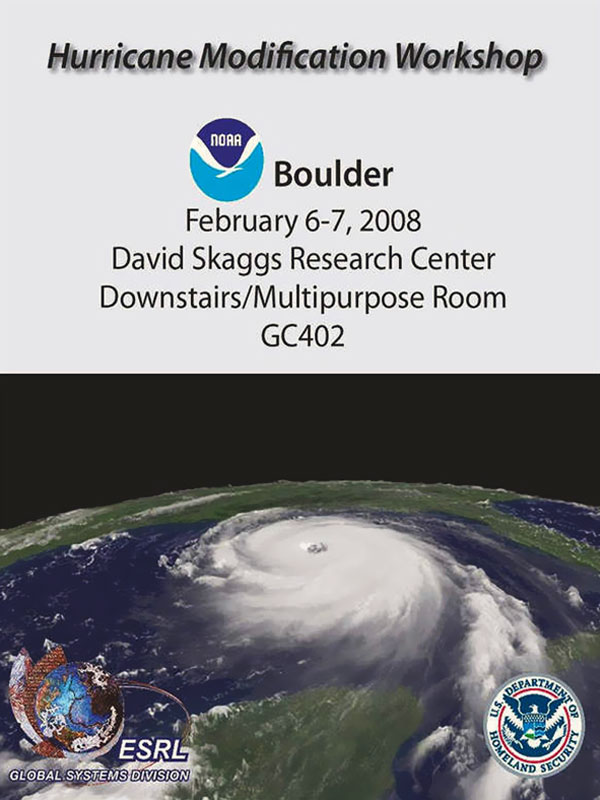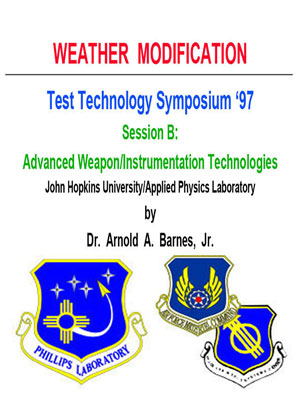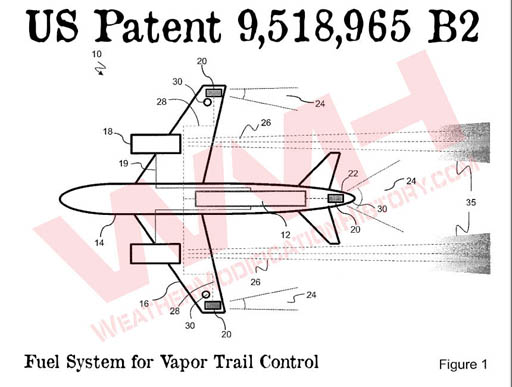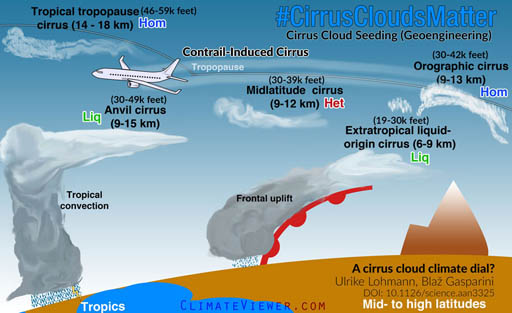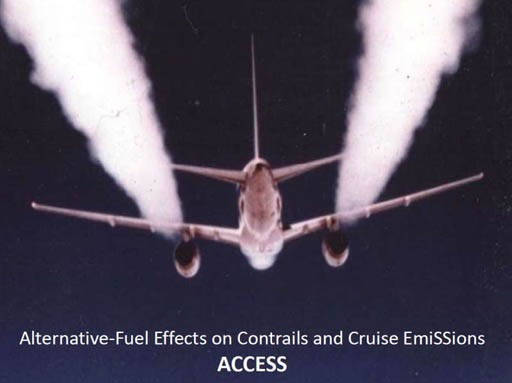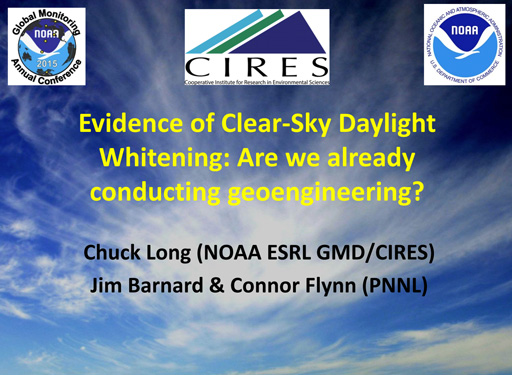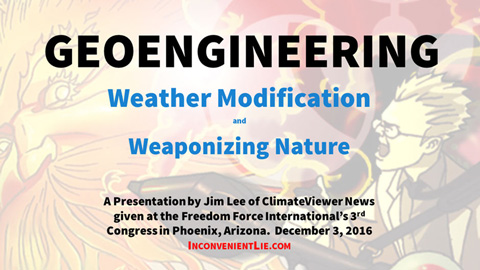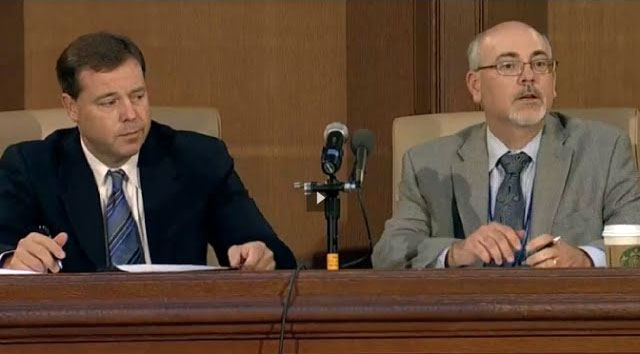
by Michael Saraceno addressing the EPA Hearing on Flight Pollution in Washington, DC on August 11, 2015.
There are four ways in which aircraft emissions endanger public health and welfare: Green House Gases, Contrail cloud cover, downwind air pollution, and environmentally induced transgenterational epigenetic changes. First of all, aviation emissions account for 2-2.5% of global CO2 emissions (UNEP Bridging the Emission Gap). “The FAA forecast projects passenger growth to average 2.0 percent per year, reaching one billion passengers in 2029, and 1.14 billion by 2035” FAA press-Release Mar 16, 2015. Global aviation emissions of CO2 almost equals the country of Germany. CO2 causes Green House Effect (GHG) that contributes to Global warming (Griggs & Harries, 2014). Other aircraft emissions include soot, sulfur, metals and nitrogen oxides (Seinfeld, J, 1998). NOx and black carbon have also contributed to global warming (Stevenson, & Derwent, 2009; Bond, et al. 2013). However, I will let the others that are here today, speak more about this topic.
The second way aircraft emissions have an impact on Climate Change is through Contrail Induced Cirrus Clouds (CICC) or Persistent Contrails (PC). “Jet Contrails maybe viewed as artificial cirrus” (Seinfeld, J, 1998). Artificial cirrus clouds form when super cooled water droplets nucleate around aerosol particles (soot, sulphuric acid) and freeze (Seinfeld, J, 1998). In 2000, NASA scientists demonstrated that the typical width of a contrail was 22Km or 72,178ft (Duda, Minnis & Palikonda, 2004). After the 911 attack air traffic shutdown, NASA scientists found that six contrail clouds formation could spread out to cover 7,722sq miles/20,000sqKm (Nguyen, Minnis, Duda, & Palikonda (2002). In addition, Contrail clouds have been shown to change earth’s surface temperatures (Travis & Changnon, 1997). In the 3 days following 911, air traffic shutdown and planes were grounded. Scientists showed that the lack of Contrails clouds over the U.S. spiked the range between the daily maximum and minimum temperature range by 1 degree Celsius (Travis, Carleton, & Lauritsen, 2002). Contrail cirrus clouds warm the earth by reflecting incoming short wave solar radiation, but block outgoing long wave infrared (Minnis, 2003). Furthermore, NASA scientists estimated that aviation contrail induced cirrus could “increase surface and lower atmospheric temperatures by 0.36 to 0.54 degrees Fahrenheit per decade.” (Minnis, P., et al, 2004;).
Finally, because Contrail induced cirrus clouds use the surrounding atmosphere water vapor, they prevent other clouds from forming (Burkhardt & Karcher, 2011).
The third way aircraft emissions have an impact on public health and welfare is from downwind air pollution. “Just as a car engine that runs efficiently produces less harmful exhaust emissions, the same is true for a jet engine. Incomplete combustion occurs at the lower power settings used for descent or when aircraft are idling or taxiing on the ground. This incomplete combustion results in CO and un- burned hydrocarbon emissions that are contributors to local air quality concerns” (NASA, 2002, pg2). There are several studies that have evaluated local air quality in and around large airports. In 2007, researchers discovered high aircraft emissions (Ultra fine particulates, carbon monoxide, sulfuric acid, volatile organic compounds, and nitrogen dioxide) around Zurich Airport (Schurmann, et al, 2007) and high nitrogen dioxide was identified 2.6km from at London Heathrow Airport (Carslaw, et al 2006). Furthermore, aircraft emissions testing at Los Angeles International Airport demonstrated ultra fine particulates some 500m downwind and most likely related to overhead aircraft approaches (Westerdahl, et al 2008). In addition, ultra fine particulates have also been found downwind from Santa Monica airport, 10 times higher in multiple sites located in residential areas (Hu, et al, 2009a). Consequently, researchers have found a significant association between respiratory hospitalizations and residential areas within 5 miles from LaGuardia and Rochester airports, respectively (Lin et al, 2008). Ultra fine particulates and exhaust gases have also been found between 150m-1200m downwind from highways with diesel vehicle traffic (Kozawa, Fruin & Winer, 2009; Hu, et al 2009b). Unlike aerial aircraft approaches, major freeways are flanked by roadside barriers both man-made and natural- vegetation. NOAA has demonstrated that the function of these barriers is to contain diesel vehicle traffic exhaust gases (Bowker, et al, 2007; Finn, et al, 2010; Baldauf, et al, 2008). These airborne pollutants are a major environmental health concern since they have been linked to numerous neurological disorders. Such as, pediatric cognitive disorders (Edwards, et al, 2010; Perera, et al, 2006; Perera, et al, 2009; Perera, et al, 2012; Eskenazi , et al, 2008; Suglia, et al, 2008; Morales, et al, 2009; Chiu, et al, 2013), adult neurodegenerative disorders, such as Alzheimer’s (Caldero ́ N-Garciduen ̃et al, 2004; Power, et al, 2010; Levesque, et al, 2011; Michelle, L. & Caldero ́ N-Garciduen, L., 2009; Calderon-Garciduenas, L. et al, 2008) and neurodevelopmental disorders, most notably Autism. In February (2015) the largest Autism Association; “Autism Speaks” announced that Vaccines don’t cause Autism Why? Because current evidence has NOT found an association between Vaccines and Autism, in fact, peer reviewed research has demonstrated the opposite (Taylor, Swerdfeher, & Eslick, 2014). So, what causes Autism? Through personal communication, according to Dr. Martha Herbert, MD, PhD, TRANSCEND Research Program at Harvard, the vast majority of Autism Spectrum Disorders (ASD) are not genetic. We now have twelve studies that link air pollution with Autism Spectrum Disorders (Roberts, et al, 2013; Volk, 2011; Volk, et al, 2013; Becerra, et al, 2013; Windham, et al, 2006; Jung, Lin, & Hwang, 2013; Raz, et al, 2015; Kalkbrenner, et al 2015; Dickerson, et al, 2015; Talbott, et al, 2015; Allen, et al, 2014; Holzman, et al., 2014). The state of Utah has some of the worst air quality in USA according to ALA, and some of the highest Autism rates according CDC. The state of South Dakota has some of the best air quality in USA according to ALA, and some of the lowest Autism rates according CDC. In 2014, Researchers found that westerly winds blew 4x the particulate matter 10Km/6.2 miles downwind LAX (Hudda, et al, 2014).
Let’s look at the Somali cohorts. The Somali immigrants in Sweden and Minneapolis both have high rates of Autism Spectrum despite living in two different countries (Magnusson, C., et al, 2012). Could they both live downwind an airport? Somali immigrants live in Northwest Stockholm downwind Bromma-stockholm airport, and where do you think the Somali’s live in Minneapolis? Downwind Minneapolis St. Paul Airport. All summer long, Southeast wind blow air pollution from St. Paul’s busiest summer runways. Look at the Autism rate for the 5 counties surrounding Atlanta International Airport, all sky high rates. What about Phoenix sky harbor airport located in Maricopa county? Highest autism rates in the state. What about Miami International airport located in Dade county? Highest autism rates in the state. I could go on and on (ADDM, Network, 2012)
So, how will aviation emissions continue to make Autism get worse over the next ten years? The FAA Modernization and Reform of 2012, allows the FAA to Crop dust USA with out any environmental review as per the Categorical Exclusion. The FAA has changed the Highway in the sky across USA and has found NO environmental impact. The FAA is using Precision Based Navigation/NextGen to increase capacity at every large and medium sized airport in the U.S. In order to increase capacity, the FAA is bringing aircraft lower and in closer proximity/formation in order to increase airport capacity. So, what’s wrong with that? “Aircraft operations that occur below 3,000 feet are considered to have an impact on ground-level air quality” (USDOT, 2010). As previously stated by NASA, aircraft at lower power setting release unburned jet fuel/hydrocarbons. Not only does jet fuel contain kerosene, but kerosene mixed with sulfur100x more sulfur than the sulfur in trucks (Dinonylnaphthalenesulfonic Acid). Jet fuel contains a system icing inhibitor called Diethylene glycol monomethyl ether (DiEGME) (ExxonMobil Aviation, 2005) that used to be classified as a pesticide. In addition, jet fuel contains several trace heavy metals (Boyle, K., 1996). Are heavy metal burdens found in Autism? Yes. Trace heavy metal exposure can be found in the hair and nails of children with Autism (Priya & Geetha, 2010). The current rate of Autism 1 in 68 boys. How bad will it get before someone will do something? Is the cost of Autism is greater than the aviation related economic stimulus? Autism related costs for the year 2015 are $268 Billion and for the year 2025, estimated to be $500 Billion. This could even be 1 Trillion due to the current Autism rate (Leigh & Du, 2015).
Finally, the fourth way in which aircraft emissions endanger public health and welfare is due to environmentally induced transgenerational epigenetic mutations. Just how dangerous is environmental pollution? In 2013 researchers found that mice exposed to jet fuel JP8 underwent epigenetic mutations (obesity), and these mutations where passed on to subsequent generations (Tracey, R., et al, 2013).
There are four ways in which aircraft emissions endanger public health and welfare: Green House Gases, Contrail cloud cover, downwind air pollution, and environmentally induced transgenterational epigenetic changes.
What other industry with so many environmental impacts to human health continues to be unregulated by the EPA and the Clean Air Act?
References
UNEP Bridging the emission gap Retrieved August 9, 2015
www.unep.org/newscentre/default.aspx?DocumentID=2659&ArticleID=8955
Press Release – FAA Forecast Sees Continued, Steady Growth in Air Travel , March 16, 2015 retrieved on August 9, 2015
www.faa.gov/news/press_releases/news_story.cfm?newsId=18434
Griggs, J & Harries, J., (2014). Comparison of spectrally resolved outgoing longwave data between 1970 and present. Proceedings of SPIE- The International Society for Optical Engineering (November).
Stevenson, D. & Derwent, R. (2009). Does the location of aircraft nitrogen oxide emissions affect their climate impact? Geophysical Research Letters, 36, L17810.
Bond, T., et al, (2013). Bounding the role of black carbon in the climate system: A scientific assessment JOURNAL OF GEOPHYSICAL RESEARCH: ATMOSPHERES, VOL. 118, 5380–5552
Seinfeld, J., (1998). Clouds, contrails and climate. Nature 391, 837-838 (26 February 1998)
Duda, D., Minnis, P. & Palikonda R., (2004). A Case Study of the Development of Contrail Clusters over the Great Lakes. Journal of Atmospheric Sciences, vol. 61, Issue 10, pp.1132-1146
Nguyen, L., Minnis, P., Duda, D., P. & Palikonda R., (2002).
SPREADING OF ISOLATED CONTRAILS DURING THE 2001 AIR TRAFFIC SHUTDOWN. 10th Conference on Aviation, Range, and Aerospace Meterorolgogy, 13-16 May 2002
Travis, D., Carleton, A. & Lauritsen, R (2002). Jet Aircraft Contrails: Surface Temperature Variations During the Aircraft Groundings of Sept. 11–13, 2001. Climatology and Aviation (Joint Session between the 10th Conference on Aviation, Range, and Aerospace Meteorology and the 13th Conference on Applied Climatology)
Tuesday, 14 May 2002.
Minnis, P (2003). In Encyclopedia of Atmospheric Sciences. Academic press
Minnis, P., et al, (2004). Contrails, Cirrus Trends, and Climate. Journal of Climate, Apr 15, 1671-1685.
Burkhardt, U. & Karcher, B., (2011). Global radiative forcing from contrail cirrus.
Nature Climate Change 1, 54–58
National Aeronautics and Space Administration, (2002). Safeguarding Our Atmosphere: Glenn Research Reduces Harmful Aircraft Emissions. Glenn Research Center, Cleveland, Ohio 44135–319.
Gregor Schurmann, et al, (2007). The impact of NOx, CO and VOC emissions on the air quality of Zurich airport. Atmospheric Environment 41, 103–118
David C. Carslaw, et al (2006). Detecting and quantifying aircraft and other on-airport contributions to ambient nitrogen oxides in the vicinity of a large international airport. Atmospheric Environment 40, 5424–5434.
Dane Westerdahl, et al (2008). The Los Angeles International Airport as a source of ultrafine particles and other pollutants to nearby communities. Atmospheric Environment 42, 3143–3155.
SHISHAN HU, et al (2009a). Airaft Emission Impacts in a Neighborhood Adjacent to a General Aviation Airport in Southern California. Environ. Sci. Technol, 43, 8039–8045
S. Lin, et al, (2008). Residential proximity to large airports and potential health impacts in New York State. Int Arch Occup Environ Health, 81: 797–804
Kozawa, K.H, Fruin S.A. & Winer, A.M. (2009). Near-road air pollution impacts of goods movement in communities adjacent to the Ports of Los Angeles and Long Beach. Atmospheric Environment 43, 2960–2970.
Hu, S., et al (2009b). A wide area of air pollutant impact downwind of a freeway during pre-sunrise hours. Atmospheric Environment 43, 2541–2549
Bowker, G.E. et al (2007). The effects of roadside structures on the transport and dispersion of ultrafine particles from highways. Atmospheric Environment 41, 8128–8139
Finn, D., et al (2010). Tracer studies to characterize the effects of roadside noise barriers on near-road pollutant dispersion under varying atmospheric stability conditions. Atmospheric Environment, 44, 204-214
Baldauf, R., et al (2008). Impacts of noise barriers on near-road air quality . Atmospheric Environment, 42, 7502–7507
Freire, C., et al. (2010). Association of traffic-related air pollution with cognitive development in children. Journal of Epidemiology in Community Health, 64, 223-228
Edwards SC, et al. (2010). Prenatal Exposure to Airborne Polycyclic Aromatic Hydrocarbons and Children’s Intelligence at Age 5 in a Prospective Cohort Study in Poland. Environ Health Perspect : doi:10.1289/ehp.0901070
Frederica P. Perera, et al, (August 2006). Effect of Prenatal Exposure to Airborne Polycyclic Aromatic Hydrocarbons on Neurodevelopment in the First 3 Years of Life among Inner-City Children. Environmental Health Perspectives Vol 114, No. 8, pages 1287-1292.Frederica P. Perera, et al, (December, 2009). Prenatal Airborne Polycyclic Aromatic Hydrocarbon Exposure and Child IQ at Age 5 Years. PEDIATRICS, Vol 124, No 6, pages 195-202.
Frederica P. Perera, et al, (June, 2012). Prenatal Polycyclic Aromatic Hydrocarbon (PAH) Exposure and Child Behavior at Age 6–7 Years. Environmental Health Perspectives, Vol 120, No 6, pages 921-926.
Brenda Eskenazi , et al (2008). Pesticide Toxicity and the Developing Brain. Basic & Clinical Pharmacology & Toxicology, Vol, 102, pgs, 228–236.
Suglia SF, et al. (2008). Association of Black Carbon with Cognition among Children in a Prospective Birth Cohort Study. Am J Epidemiology, 167, 280-286.
Morales, E, et al (2009). Association of Early-life Exposure to Household Gas Appliances and Indoor Nitrogen Dioxide With Cognition and Attention Behavior in Preschoolers. American Journal of Epidemiology,169 (11):1327-1336;
Chiu, YHM, et al (2013). Associations between traffic-related black carbon exposure and attention in a prospective birth cohort of urban children. Environmental Health Perspectives http://ehp.niehs.nih.gov/1205940/54.Caldero ́ N-Garciduen ̃et al, (2004)
Brain Inflammation and Alzheimer’s-Like Pathology in Individuals Exposed to Severe Air Pollution. Toxicologic Pathology, 32:650–658,
Power MC, et al, (2010) Traffic-Related Air Pollution and Cognitive Function in a Cohort of Older Men. Harvard School of Public Health. Environ Health Perspect. Dec 20. [Epub ahead of print]
Levesque S, Surace MJ, McDonald J, Block ML. 2011 Air pollution and the brain: Subchronic diesel exhaust exposure causes neuroinflammation and elevates early markers of neurodegenerative disease. J Neuroinflammation. 2011 Aug 24;8(1):105. [Epub ahead of print]
Michelle L.B & Lilian Caldero ́ n-Garciduen ̃ (2009). Air pollution: mechanisms of neuroinflammation and CNS disease. Trends in Neurosciences, Vol 32, No.9Calderon-Garciduenas L, Solt AC, et al, (2008). Long-term air pollution exposure is associated with neuroinflammation, an altered innate immune response, disruption of the blood-brain barrier, ultrafine particulate deposition, and accumulation of amyloid beta-42 and alpha-synuclein in children and young adults. Toxicol Pathol. 2008;36(2):289-310. Epub 2008 Mar 18
Autism Group Urges Parents To Vaccinate Children: 'Vaccines Do Not Cause Autism' Retrieved August 9, 2015 http://www.huffingtonpost.com/2015/02/08/vaccines-do-not-cause-autism-speaks_n_6632000.htmlTaylor, L., Swerdfeher, A., & Eslick, G., (2014). Vaccines are not associated with autism: An evidence-based meta-analysis of case-control and cohort studies. Vaccine, Vol 32, Number 29, 17 June 2014, Pages 3623–3629
Andrea L. Roberts, et al (2013). Perinatal Air Pollutant Exposures and Autism Spectrum Disorder in the Children of Nurses’ Health Study II Participants. Environmental Health Perspectives, Vol 121, No.
Heather E. Volk, (June 2011). Residential Proximity to Freeways and Autism in the CHARGE Study. Environmental Health Perspectives, Vol. 119, No. 6, pages 873-877.Heather E. Volk, et al, (Jan 2013). Traffic-Related Air Pollution, Particulate Matter, and Autism. JAMA PSYCHIATRY, Vol.70, No 1), pages 71-77.
Tracy Ann Becerra, et al, (March, 2013). Ambient Air Pollution and Autism in Los Angeles County, California. Environmental Health Perspectives, Vol 121, No. 3, Pages 380-386.
Gayle C. Windham, et al, (2006). Autism Spectrum Disorders in Relation to Distribution of Hazardous Air Pollutants in the San Francisco Bay Area . Environmental Health Perspectives, Vol 114, No.9, pages 1438-1444
Jung, C., Lin, Y., Hwang, B-F., (2013). Air Pollution and Newly Diagnostic Autism Spectrum Disorders: A Population-Based Cohort Study in Taiwan. PLOS One, September 2013, Vol 8, Issue 9.
Raz, R., et al. (2015). Autism Spectrum Disorder and Particulate Matter Air Pollution before, during, and after Pregnancy: A Nested Case–Control Analysis within the Nurses’ Health Study II Cohort. Environmental Health Perspectives, Vol. 123, number 3
Kalkbrenner, A., et al (2015). Particulate matter exposure, prenatal and postnatal windows of susceptibility, and autism spectrum disorders. Epidemiology: 2015 Jan;26(1):30-42.
Dickerson, A. et al, (2015). Autism spectrum disorder prevalence and proximity to industrial facilities releasing arsenic, lead or mercury. Vol. 536, 1 December 2015, pg245-251
Talbott, E., et al, (2015). Particulate matter and the risk of Autism spectrum. Environmental Research. Vol. 140, pg 414-420.
Allen, J. et al, (2014). Early Postnatal Exposure to Ultrafine Particulate Matter Air Pollution: Persistent Ventriculomegaly, Neurochemical Disruption, and Glial Activation Preferentially in Male Mice. Environmental Health Perspectives, Vol. 122, number 9
Holzman, D.C., et al, (2014). Pesticides and Autism spectrum disorders: new finding from the charge study. Environmental Health Perspectives, Vol. 122, number 10
Hudda, N, et al (2014). Emissions from an International Airport Increase Particle Number
Concentrations 4‐fold at 10 km Downwind. Environmental Science & Technology, 48, p6628-6635.
Magnusson, C., et al (2012). Migration and autism spectrum disorder: population-based study. British Journal of Psychiatry, 201, 109-115.
Autism and Developmental Disabilities Monitoring (ADDM) Network, 2012, CDC
USDOT, 2010 Freight and Air Quality Handbook May 2010.
Boyle, K., (1996). Evaluating Particulate Emissions from Jet Engines: Analysis of Chemical and Physical Characteristics and Potential Impacts on Coastal Environments and Human Health. Transportation Research Record: Journal of the Transportation Research Board, 1517.
ExxonMobil Aviation, (2005). World Jet Fuel Specifications.
(Priya L., & Geetha, A., (2010). Level of Trace Elements (Copper, Zinc, Magnesium and Selenium) and Toxic Elements (Lead and Mercury) in the Hair and Nail of Children with Autism. Biol Trace Elem Res
Leigh, P. & Du, J. (2015). Brief Report: Forecasting the Economic Burden of Autism in 2015 and 2025 in the United States. Journal of Autism and Developmental Disorders. July 17 [Epub ahead of print]
Tracey, R., et al, (2013). Hydrocarbons (Jet Fuel JP-8) Induce Epigenetic Transgenerational Inheritance of Obesity, Reproductive Disease and Sperm Epimutations. Reproductive Toxicology, 36: 104–116.






